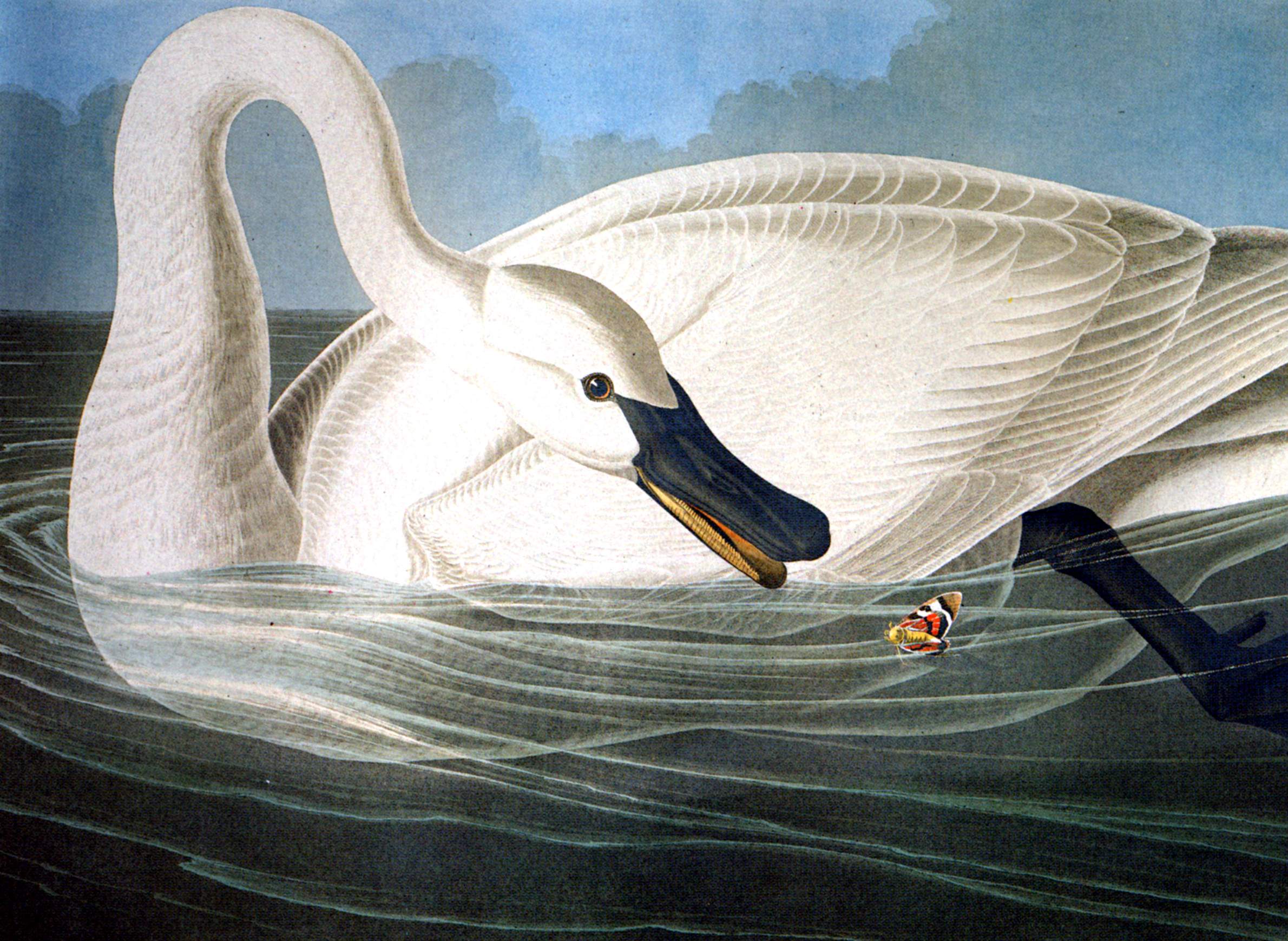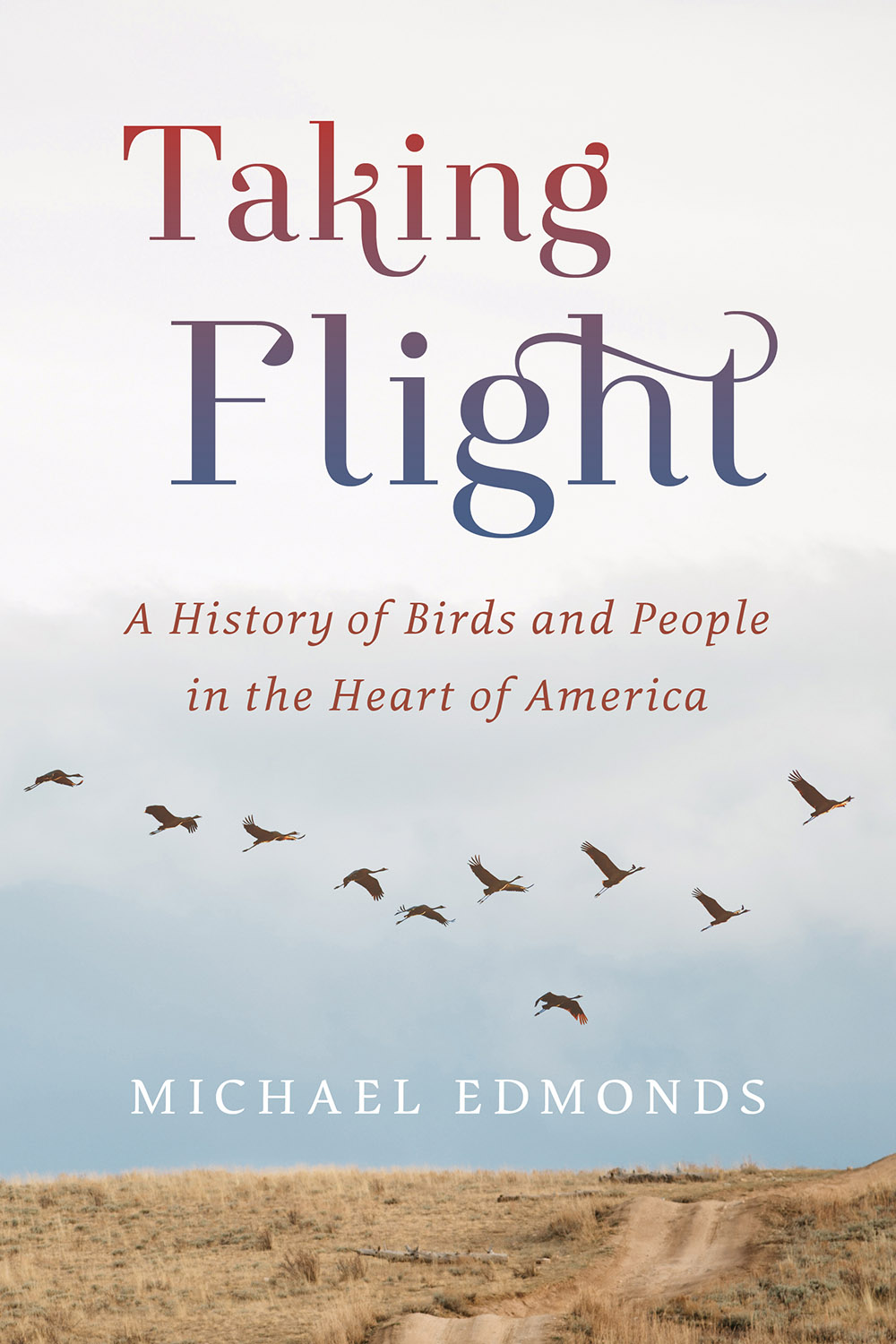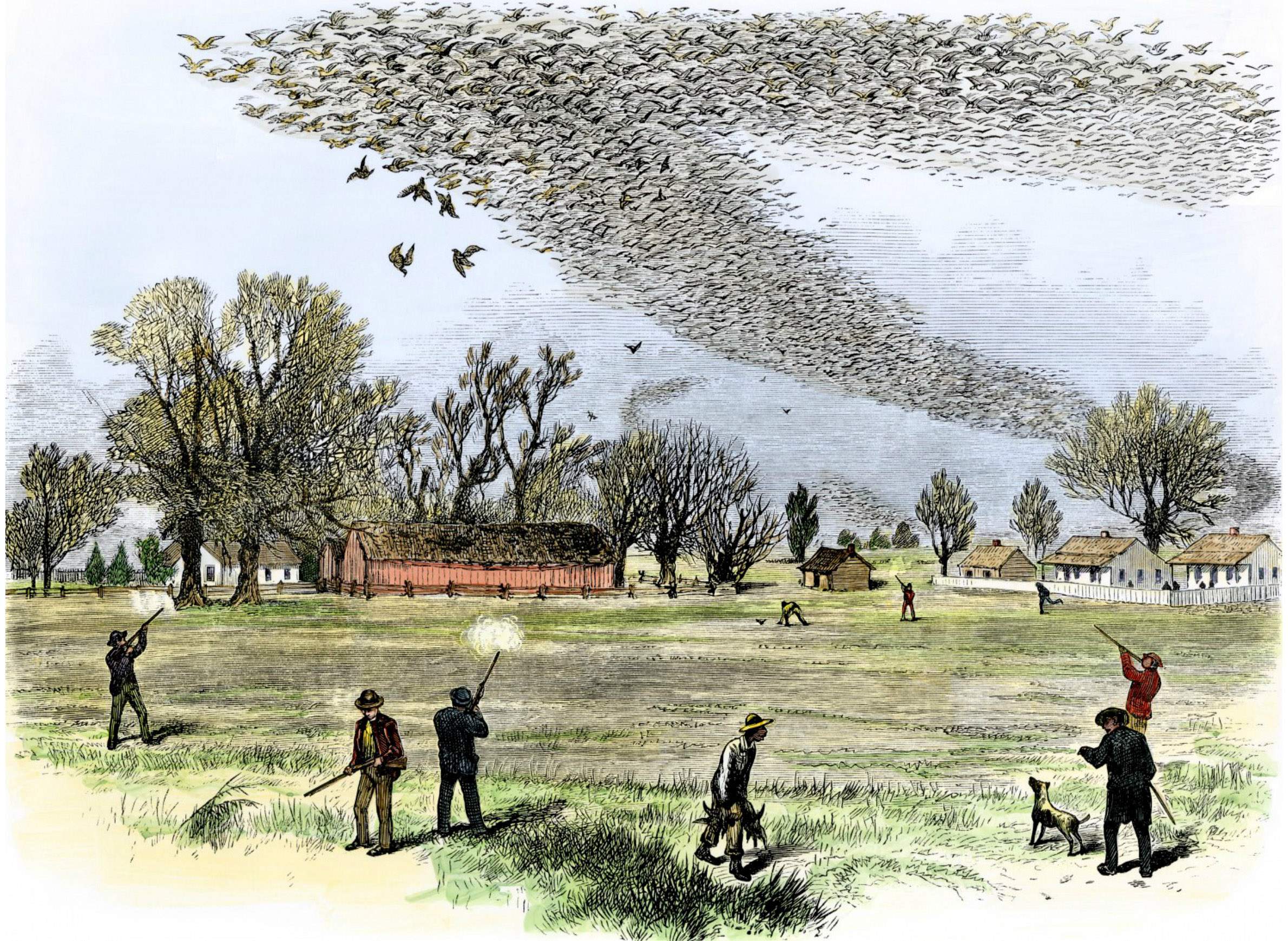
The Past Wholesale Destruction Of Bird Life Across The Midwest

Birds are the one type of wildlife that people encounter on an everyday basis, watching their flight and listening to their song upon stepping outdoors. The relationship between humans and birds goes back millennia, with the winged animals serving as a source of veneration, fascination and sustenance. In Wisconsin and around the Midwest, birds were central to numerous Native American cultures, and were one focus of a nascent movement of naturalists cataloging the world around them. Birds were omnipresent, but over the course of just a few decades at the end of the 19th century, millions upon millions were killed in a spree of hunting for food and feathers. As exemplified by the extinction of the passenger pigeon, which had the largest nesting on record in Wisconsin in 1871, commercial markets for game bird meat and plumage in the burgeoning industrial centers of the Great Lakes and Northeast spurred professional hunters to harvest a variety of species up to and past the point of eradication. The long story of intersections between humans and the vast spectrum of avian wildlife is detailed in Taking Flight: A History of Birds and People in the Heart of America, written by Michael Edmonds and published by the Wisconsin Historical Society Press. An excerpt from the book describes how the pressures of growing human populations and the hunting of birds resulted in a colossal slaughter that helped galvanize early conservation movements.
Bird populations began to tumble under pressure from market gunners, sport hunters and habitat loss from draining wetlands for farming. Conservation measures first appeared in the Midwest when hunting licenses were mandated late in the nineteenth century. The first states in the region to require licenses were Arkansas and Missouri (in 1875 and 1877), but these applied only to nonresidents.
Most other states left hunting unregulated for another two decades, until they, too, began to require out-of-state residents to buy licenses. As late as 1904, half the states in the Midwest had no resident licensing requirement, since voters would not tolerate being told by the government what they could do on their own property.
But even where they were mandated, licenses were largely ineffective since few hunters bothered to get them. In 1903, for example, only 218,008 hunting licenses were issued by all the eleven states in the Mississippi Flyway, when they had a combined population of nearly thirty-two million. Many local residents considered the birds to be their own property, just like their fields and woodlots.
"Farmers would chase us with pitch forks and monkey wrenches and anything they could get hold of," said Dick Harker, an Iowa market gunner who recalled one encounter with a landowner. "He had a four tine pitch fork and was sure mad at me and told me to get out of that lake. I told him, 'You poor old fish, what’s the matter with you? You don't own this lake. This is government water and I’ve got a perfect right here.' Then he was going to have me arrested and I told him to hop right to it."…
Behavior like this infuriated some educated, urban sport hunters, many of whom could see, as early as the 1870s, that the birds needed protection. Antipathy between market gunners and sportsmen intensified as the nineteenth century drew to a close and bird populations diminished.…
Violence between the two groups was common. Wealthy, educated hunters from the cities did everything in their power, legal and illegal, to acquire access to birds and preserve that access with conservation laws. Working-class market hunters and farmers in the country fought just as fiercely to protect their incomes and what they considered private property rights.
The conflict had been growing for three decades when in 1884 the American Ornithologists' Union formed a committee, which consisted of many sportsmen and bird collectors, to gather "facts and statistics bearing upon the subject of the destruction of our birds." When the committee asked for grassroots data on migration and distribution, they were swamped with more than fourteen hundred responses. Two years later, the results of their findings were published as a special supplement to the journal Science.
It exonerated sport hunters and ornithologists, suggesting that the former were in the forefront of bird protection and that the latter were too few in number to affect bird populations. All the specimens collected by professional ornithologists since American museums began, the AOU claimed, numbered only 110,000 birds (modern scholars suggest closer to a million), and all those in private collectors' cabinets combined totaled no more than 300,000.
Instead, the AOU laid the blame for declining bird populations on five groups who could not have been more different from its own members. The first was, of course, "the 'professional' or 'market' gunners, by whom the ranks of the water-fowl are so fearfully thinned, and who often resort to any wholesale method of slaughter their ingenuity may be able to devise." But they also castigated African Americans, whose market stalls in the South contained thousands of songbirds, including flickers, robins, and even warblers destined for stew pots; immigrants, who executed "indiscriminate, often very quiet, slaughter" of birds with traps and poison grain; small boys, who they claimed robbed nests of eggs and killed birds indiscriminately with toy bows or pea-shooters; and "the dead-bird wearing gender."
Although the affluent, educated AOU committee members denounced working-class immigrants, African Americans and delinquent youth, it was women who received the most censure. Examples were cited of eleven thousand songbirds collected for the millinery trade in a single trip to South Carolina; forty thousand terns collected one season on Cape Cod; and seventy thousand skins supplied to Long Island hatmakers in just four months. Nationwide, the AOU estimated that fashion trends were responsible for the deaths of five million birds annually.… That was probably half the number killed by the nation's market hunters each year.
The AOU report concluded that contemporary conservation laws were inadequate, unenforceable and universally despised.
"So apathetic is the public in all that relates to bird-protection," it said, "that prosecution under the bird-protection statutes requires, on the part of the prosecutor, a considerable amount of moral courage to face the frown of public opinion, the malignment of motive, and the enmities such prosecution is sure to engender."
Despite its obvious biases on matters of class, race, ethnicity and gender, the AOU's 1886 report sounded an alarm.
Unfortunately, it went unheard. The 1,400 survey responses were left to gather dust, and effective conservation measures didn't begin for another decade when, in 1896, the first Audubon Society was formed in Massachusetts. It helped publicize horrific stories of bird slaughter for the millinery trade, prompting the establishment of fourteen other chapters.
Then, in 1897, William Hornaday of the New York Zoological Society collected nearly two hundred questionnaires from observers around the country and concluded that, nationwide, nearly half of all American birds had perished since 1882.
Devastating as Hornaday's statistical conclusion sounds, it lacks the emotional power of the brief comments made by local observers in response to his questionnaire:
Detroit, Michigan: "Water fowl generally have decreased in number, almost to total extinction. Certainly not more than 1/4 as many seen now in Mich, as were seen 15 years ago."
Milwaukee, Wisconsin: "Birds are decreasing fearfully in this locality. . . . Where, in the days of my boyhood, thirty-five years ago, orchards and woodlands were ringing with bird music, silence seems to reign supreme in these last years of the century . . . Of many of the birds named [our finest song and game birds] scarcely 1/4th are to be found now, while of numerous other species scarcely 1/10th or even 1/50th are to be met with to-day."
Keokuk, Iowa: "Of birds of prey, one-half remain; of water fowl, one-third; game birds, one-tenth."
Lawrence, Kansas: "Prairie chickens almost exterminated in eastern third of this state. Not one-thousandth as many as there were at one time. Wild turkey extinct in the state. Water birds — geese, ducks, Wilson's snipe, plover, etc. — about one-twentieth as many as formerly. Woodcock rare; ruffed grouse and wild pigeon extinct."
Fifteen years later, in 1912, Hornaday performed another survey, which showed that twenty-five birds species had become extinct in at least one Midwestern state where they had once been common. Three — the Carolina parakeet, passenger pigeon, and whooping crane — were entirely gone from the region.
An 1875 illustration depicts hunters shooting at a passenger pigeon flock in northern Louisiana.
Although most birds killed for the millinery trade came from the Atlantic Coast or the South, a fair share came from the Midwest; the snowy egret, American white pelican, sandhill and whooping cranes, and trumpeter swan had all been decimated in the heart of the continent.
If Midwestern market hunters averaged as many birds as Dick Harker did, they killed 2.8 million game birds and waterfowl annually between 1878 and 1918, or 112 million birds in all. But Hornaday's observers suggested that not market gunners but sportsmen and plume collectors were the chief cause of population declines. Assuming sportsmen contributed as much to the slaughter as market hunters did and that plume hunters killed half as much, the total would be more than 250 million birds killed in a single generation in the Mississippi Flyway.
This item was excerpted from Taking Flight: A History of Birds and People in the Heart of America, published by Wisconsin Historical Society Press. The book's author, Michael Edmonds, was interviewed about the connections between humans and their feathered neighbors on the Feb. 28, 2018 edition of Wisconsin Public Radio's The Larry Meiller Show.
Author Michael Edmonds has been a recreational birder for three decades. He is the author of two award-winning books from the Wisconsin Historical Society Press, Out of the Northwoods and Risking Everything, and has written several articles for the Wisconsin Magazine of History and other journals. He graduated from Harvard University in 1976, joined the Wisconsin Historical Society staff in 1982 and has taught at the University of Wisconsin since 1986.
This report is the copyright © of its original publisher. It is reproduced with permission by WisContext, a service of PBS Wisconsin and Wisconsin Public Radio.





